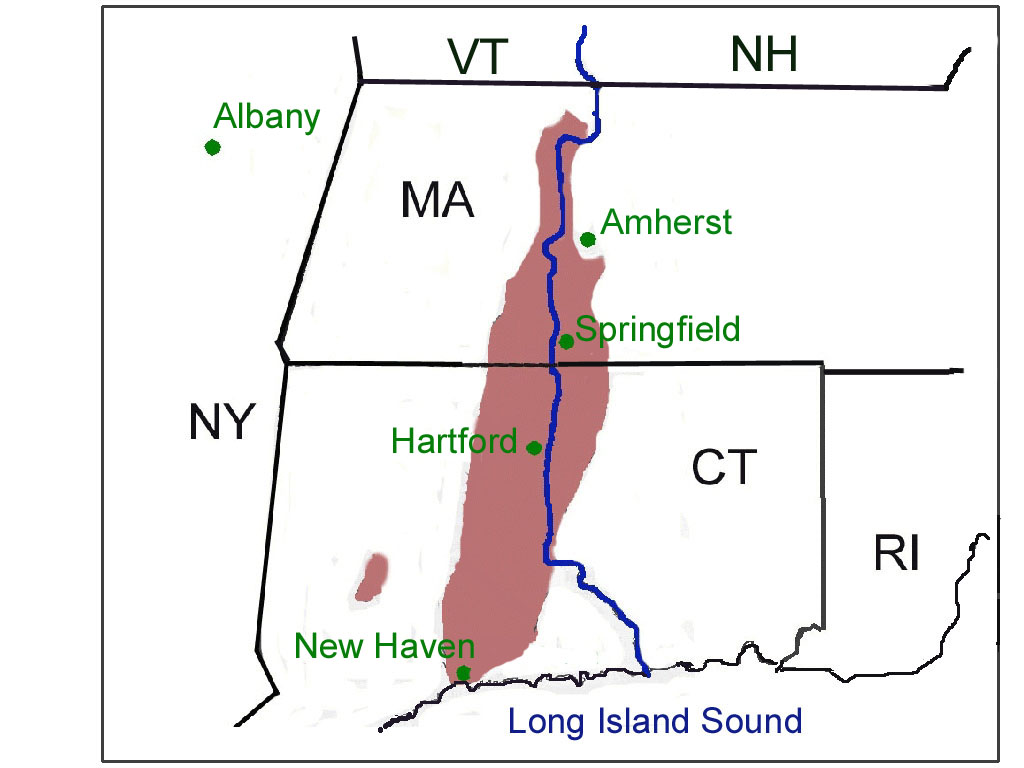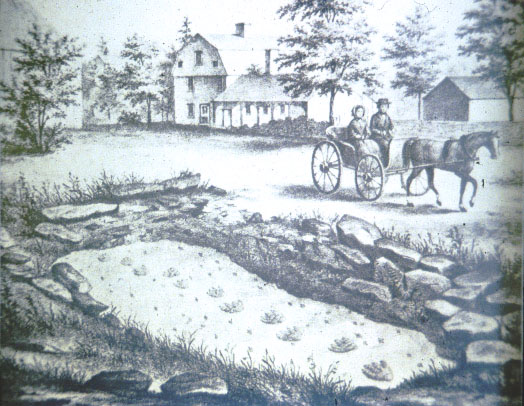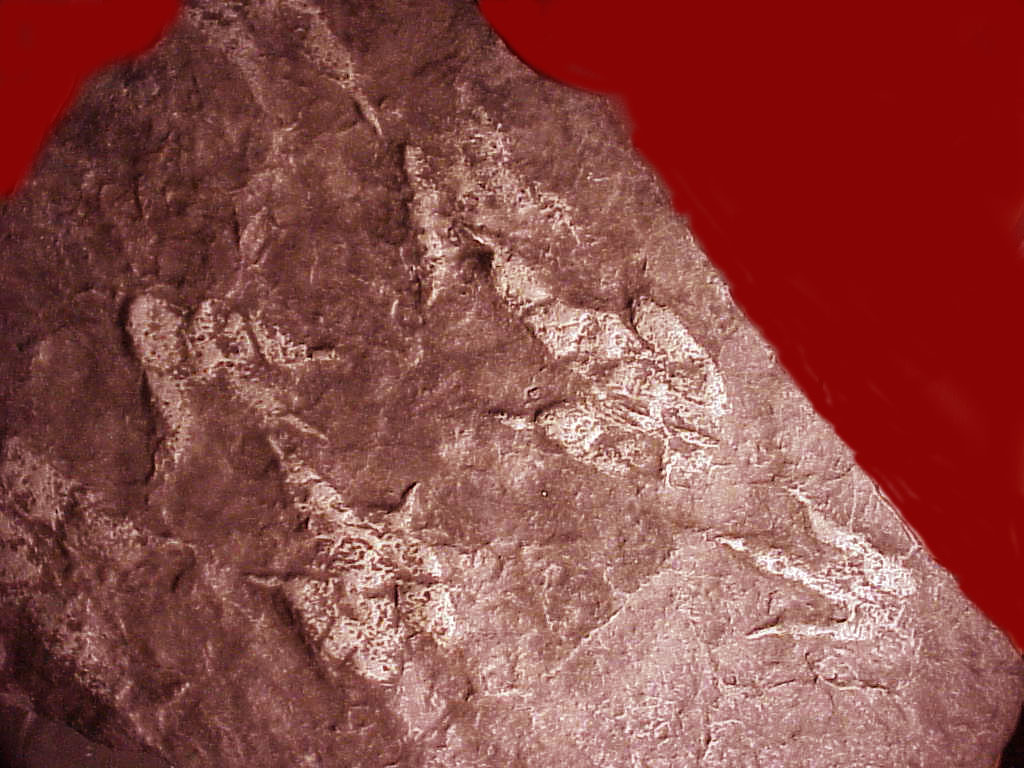

 | EDWARD HITCHCOCK: Professor of Theology and President of Amherst College, Amherst, MA. (17?? - 1864). From its headwaters along the Quebec/New Hampshire border, the Connecticut River flows southward to Long Island Sound (see map of southwestern New England at left). In Massachussetts and Connecticut, the river has eroded into sandstones and shales of Triassic and early Jurassic age (brown area on map) forming a broad, fertile valley, that has been a center of agriculture since colonial days. These rocks preserve a rich array of footprints made by animals living in this area during Triassic and early Jurassic times. |
 | Fossil footprints were first noticed by pre-Revolutionary War farmers, who often explained them in rather fanciful ways. The lithograph at left, which gives a 19th century view of such footprints, suggests they were made by an animal with four-toed feet. Prof. Hitchcock was intrigued by the footprints and spent much of his time in the field sketching, recording, and collecting footprints as they were unearthed during farming activities up and down the valley. He devoted years to a thorough study of the Connecticut Valley footprints, particularly in his later years, and in 1858, published a well-received volume entitled Ichnology of New England in which he argued that the largest footprints were made by ancient birds. |
 | While it is true that
many of these footprints resemble footprints made by birds, we now know that they are
dinosaur fooprints (they are too large, and too old to be those of birds, and are identical
to well documented dinosaur footprints found in other places). The photo at left shows a
slab of Connecticut Valley rock displaying seven large three-toed footprints. The
impressions of the claws are visible in the better preserved footprints. These prints were
made by Dilophosaurus, a large carnivorous dinosaur of the late Triassic. Note that
the large prints in the lithograph are four-toed, not three-toed. Apparently the artist who
made the original woodcut was not well acquainted with the actual article since there are no
large four-toed dinosaur footprints in the Connecticut Valley rocks.
Excellent examples of the Connecticut Valley footprints, and the animals that made them, can be found at Rocky Hill State Park, a few miles south of Hartford. |